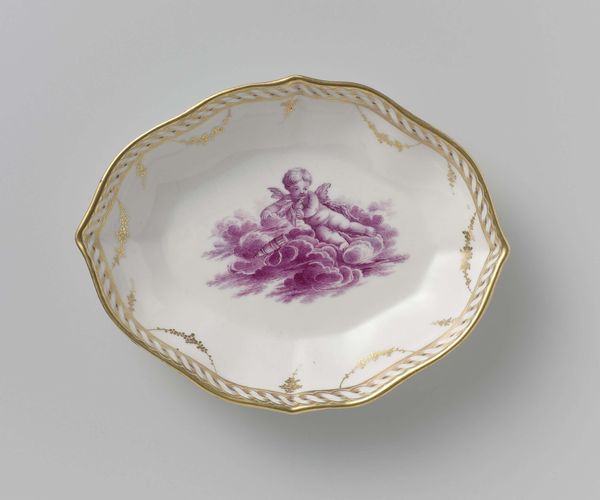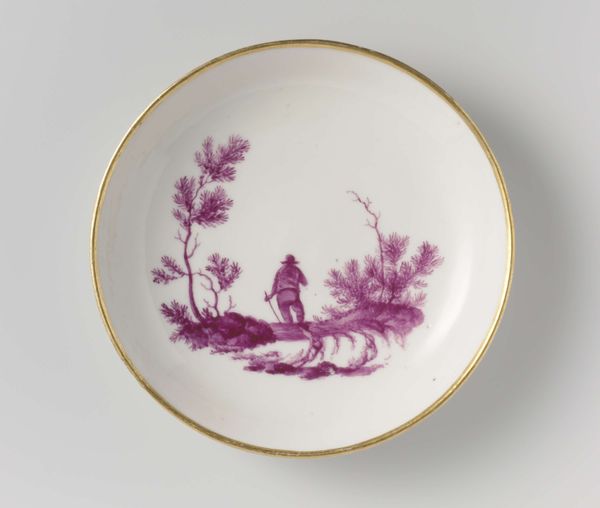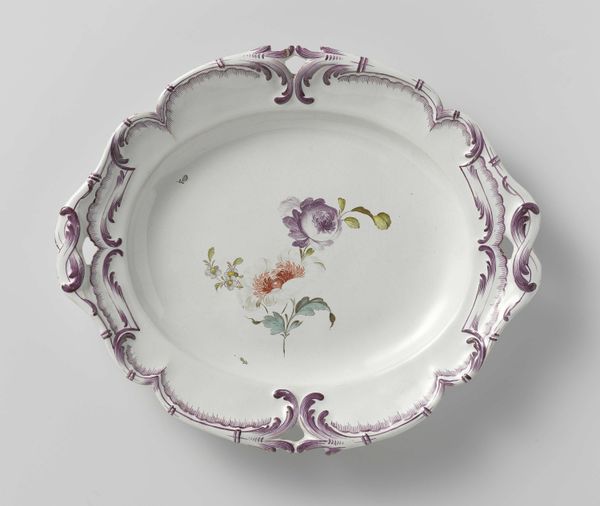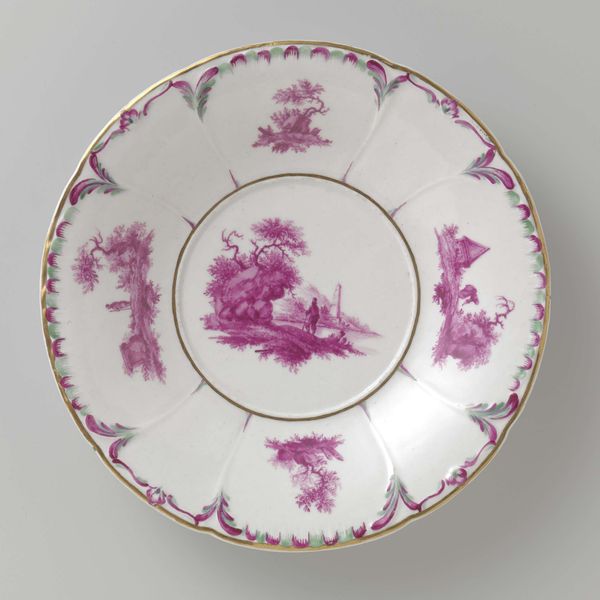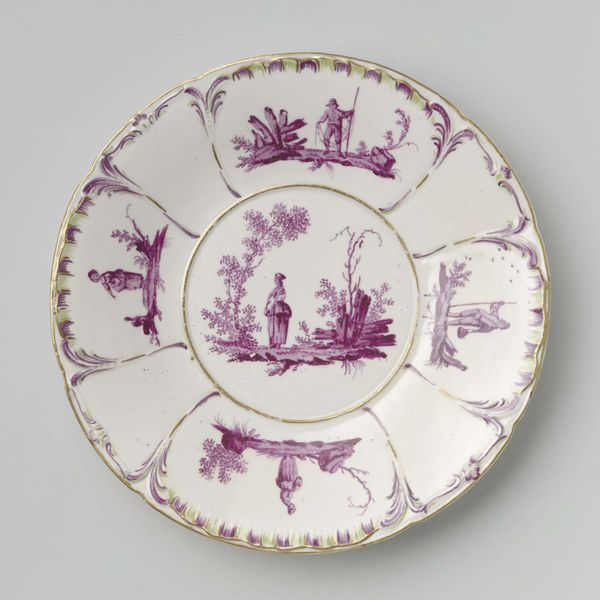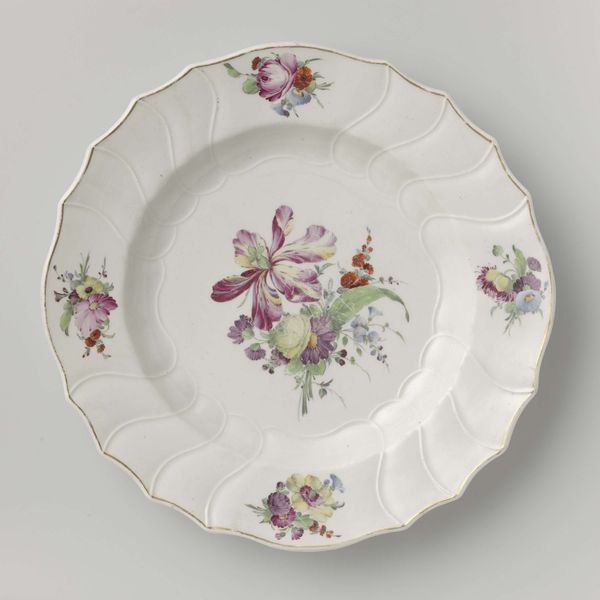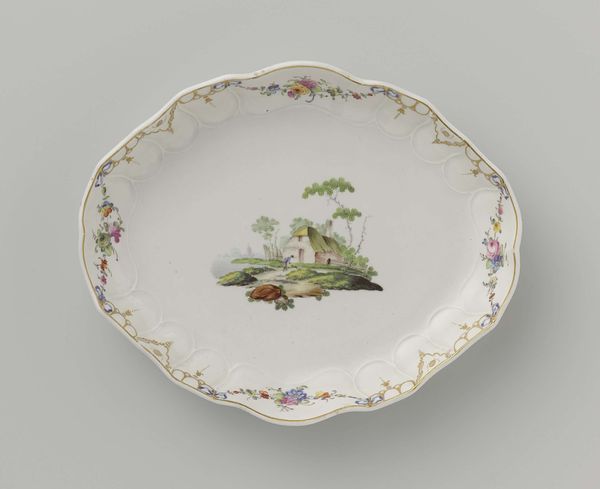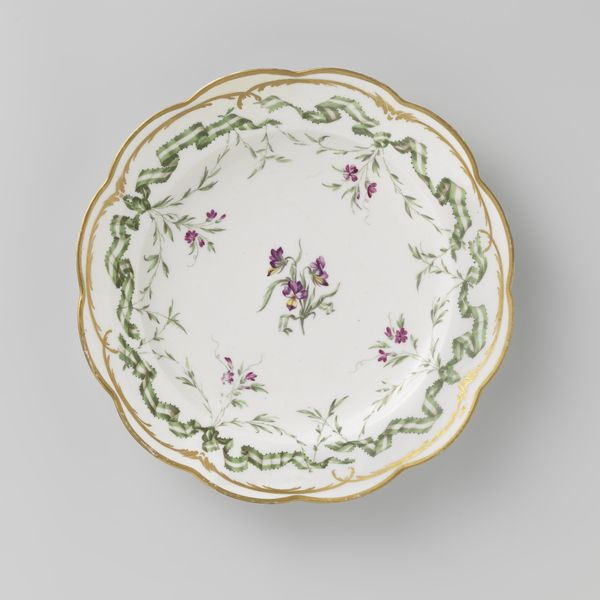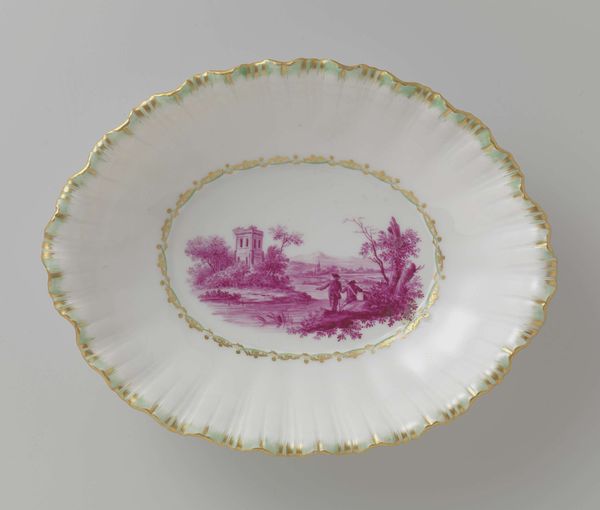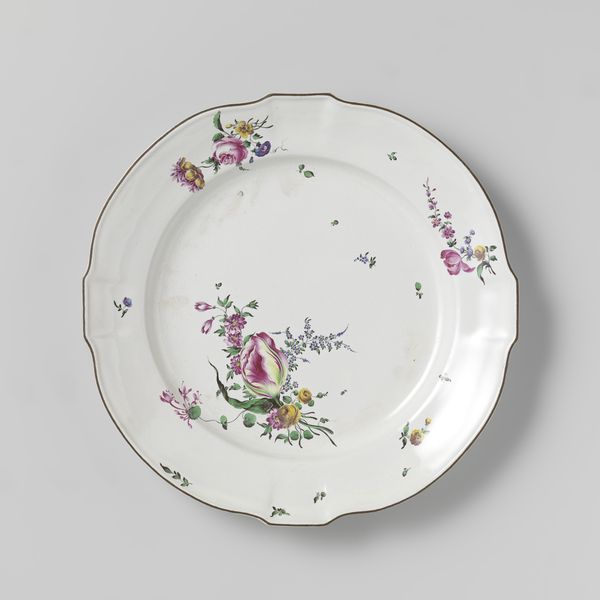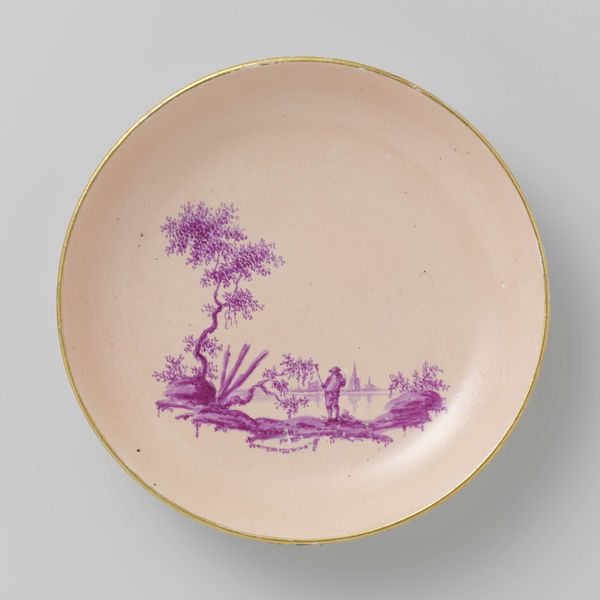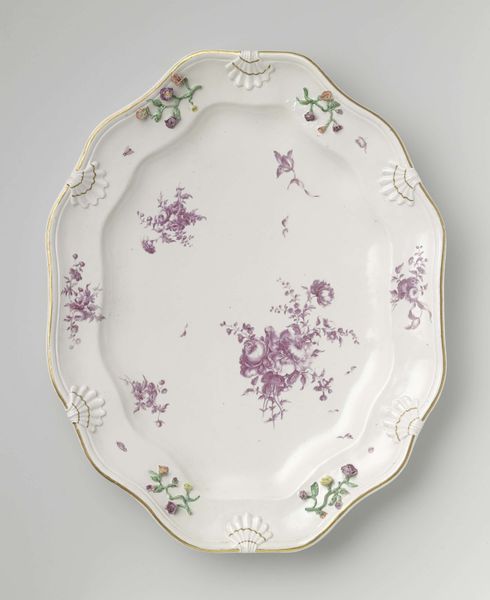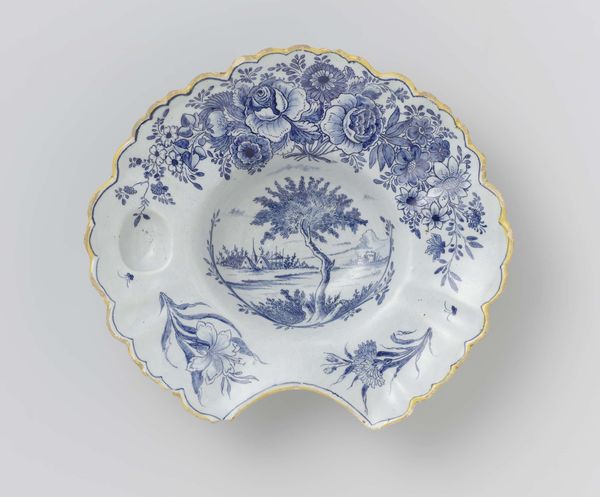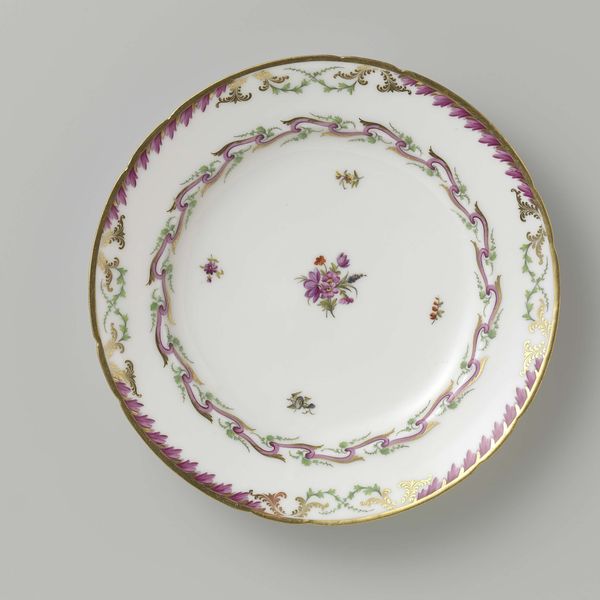
Onderschotel, veelkleurig beschilderd met een landschap met een tuinvaas c. 1774 - 1778
loosdrecht
Rijksmuseum
Dimensions: height 2.6 cm, width 18.5 cm, width 14.2 cm
Copyright: Rijks Museum: Open Domain
Curator: Here we have an interesting example of Loosdrecht porcelain: an oval dish dating from around 1774 to 1778, its decoration rendered in a striking puce. Editor: It's lovely, if a little faded. The scene depicted—a landscape with a garden vase—evokes a sort of melancholic pastoral. It feels incredibly mannered, a performance of leisure. Curator: Absolutely. Loosdrecht was a small, short-lived factory, heavily reliant on skilled artisans often poached from larger Delftware manufactories. What appears "faded" to us is actually an example of "camaieu" a deliberate tonal control which emphasizes the delicacy of the material. Note the crispness of the gilt edging—the application itself required a highly skilled hand. Editor: I am thinking about who would have acquired something like this, and under what conditions? How would such a piece operate within the performative rituals of bourgeois domesticity, for instance? The controlled "melancholy" aesthetic seems almost prescriptive of the attitudes its owners should adopt. Curator: Precisely. Its rococo sensibility wasn't simply aesthetic, it was deeply intertwined with the social signaling that porcelain afforded elite consumers during the late 18th century. These wares weren’t just functional items. They were instruments in a delicate dance of class and status, where labor was sublimated, masked by refinement. Editor: Right. And you cannot escape the politics of extraction at play here. The Kaolin used to make this porcelain implicates Europe directly with its violent colonial regimes and exploitative extraction economies abroad. Curator: Indeed. Understanding the historical processes that gave rise to this seemingly innocuous object allows us to grasp its fuller meaning—one that belies its delicate appearance. Editor: Looking closely allows us to recognize how everyday items carry encoded meaning far beyond their practical function. The rosy-tinted view demands critical engagement with labor, global exchange, and social stratification. Curator: Exactly—material and social conditions are inextricably intertwined here. Editor: Absolutely. There’s always more to see, and to critique.
Comments
No comments
Be the first to comment and join the conversation on the ultimate creative platform.
